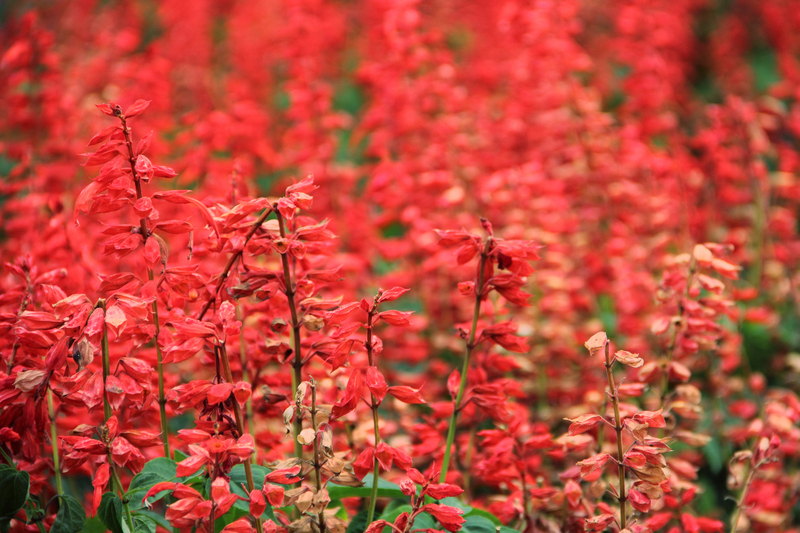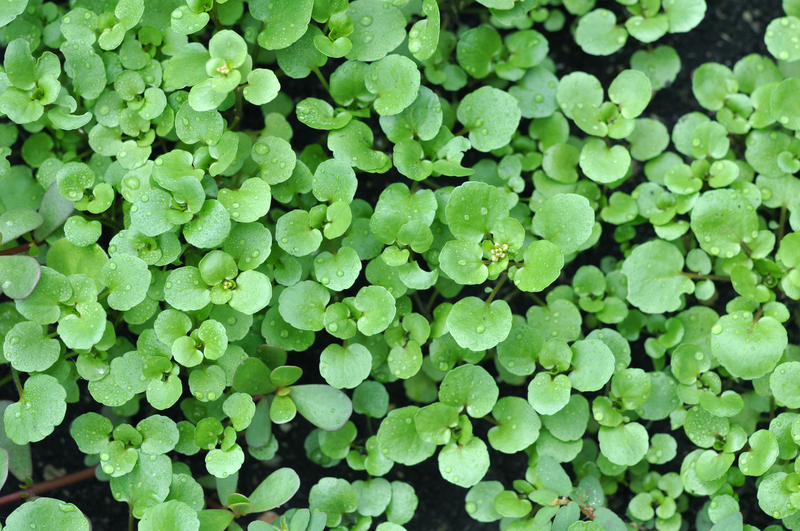Gardeners Unite: Combat Climate Change with Flora
Posted on 22/08/2025
Gardeners Unite: Combat Climate Change with Flora
As climate change accelerates, more and more people are looking for effective, approachable ways to make a difference. One of the proven ways to help our planet is right in our backyards. Gardeners throughout the globe are rising to the challenge--by nurturing gardens full of diverse flora, they directly fight back against the changing climate. In this comprehensive guide, we'll show you how you, too, can join the movement to combat climate change as a gardener.
Understanding Climate Change and the Role of Flora
Climate change refers to long-term shifts in temperatures and weather patterns. Chiefly driven by human activity--like burning fossil fuels--these changes impact everything from sea levels to growing seasons. One of the most promising solutions is enhancing natural ecosystems, particularly gardens and green spaces rich in plants.
- Gardens trap carbon dioxide, a key greenhouse gas.
- Healthy soil under plants acts as a massive carbon sink.
- Plants cool the air, provide habitat, and support biodiversity.
- Vegetable patches and food forests reduce supply-chain emissions.
By choosing to garden with a focus on climate change mitigation, you're doing more than just beautifying your property--you're joining a global network of earth-healers.

Why Every Gardener Matters in the War Against Climate Change
No effort is too small. If you have a balcony, a backyard, or even a windowsill, you can be part of the solution. When gardeners unite, small changes grow into a collective force that combats climate change with flora of all kinds. Here's why every plot and pot counts:
- Local action, global impact: Each living plant filters carbon and cools the environment.
- Community inspiration: Your efforts inspire neighbors and friends, multiplying the effect.
- Supporting pollinators and wildlife: Healthy flora provides food and refuge for insects, birds, and animals.
As communities of gardeners unite to fight climate change, we can fortify our ecosystems and create a resilient, cooler, and greener world.
How Flora Fights Climate Change: The Science
Carbon Sequestration
Plants absorb carbon dioxide during photosynthesis. This carbon is stored in their tissues and, crucially, in the soil itself, thanks to roots and soil microbes. Healthy, undisturbed soil stores vast amounts of carbon--making every garden bed a frontline in the climate battle.
- Trees and shrubs by their nature store more carbon for longer.
- Grasses, groundcovers, and even annuals sequester carbon rapidly.
- Compost-rich soil increases carbon storage capability.
Temperature Regulation
Urban and suburban areas heat up rapidly due to concrete and asphalt. Gardens full of plants cool the ambient air through shade and the process of transpiration. This urban heat island effect can be reduced when gardeners unite to plant trees, vines, and hedges.
Biodiversity and Resilience
Diverse gardens provide crucial habitats for pollinators and beneficial insects. Native flora is especially important in supporting local species. Biodiversity makes our ecosystems more resilient to drought, heat waves, and pests--problems exacerbated by climate change.
Food Production: Reducing Emissions
Growing your own vegetables, fruits, and herbs means fewer miles traveled for your food, fewer packaging materials, and reduced refrigeration needs. Edible gardens are a delicious way to directly cut your climate footprint.
Top Climate-Friendly Practices for Gardeners
Choose Climate-Resilient, Climate-Positive Plants
- Select native and drought-tolerant species.
- Grow trees and shrubs that thrive in your region.
- Incorporate deep-rooted perennials for soil health.
- Plant a diverse array of flora for maximum benefit.
Research which species store the most carbon or best adapt to local conditions. By choosing wisely, gardeners can unite in planting flora perfectly suited to combating climate change.
Go Organic and Minimize Chemicals
Avoid synthetic fertilizers and pesticides, which are fossil fuel intensive and harm beneficial soil organisms. Healthy, microbe-rich soils do a better job storing carbon and supporting plant growth.
Compost and Mulch
- Compost kitchen and garden waste to create a closed nutrient loop.
- Mulch beds to lock in moisture and reduce runoff.
- Both practices increase soil carbon and fertility.
Practice Water Conservation
Climate change makes water scarcer in many regions. Water plants efficiently (morning or evening), collect rainwater, and use mulches or groundcovers to reduce evaporation.
Reduce, Reuse, Upcycle in the Garden
Repurpose pots, use salvaged materials, and minimize new plastic purchases. Every eco-friendly choice counts towards a more sustainable garden.
The Power of Trees and Forest Gardening
One of the most powerful ways to fight climate change with flora is by planting trees and adopting forest gardening techniques.
- Tree canopies soak up carbon, cool the landscape, and provide homes for countless species.
- Agroforestry and food forests combine edible crops with climate-positive trees, creating perennial abundance.
- Even small trees or dwarf fruit trees count--urban gardeners, unite!
Selecting Trees for Climate Action
Native trees and those adapted for local rainfall and temperatures will survive and store carbon for the long term. Avoid invasive species and focus on diversity for ecosystem health.
- Oaks, maples, elms, and native fruit trees are often climate powerhouses.
- Research local conservation group recommendations for species selection.
Gardening for Biodiversity: Supporting Pollinators and Wildlife
Every gardener can combat climate change by supporting biodiversity. Rich, layered plantings attract pollinators and beneficial insects essential to ecological balance.
- Mix flowers, herbs, shrubs, and trees for year-round blooms.
- Allow some wild patches for native bees, butterflies, and birds.
- Avoid neonics and harmful chemicals that disrupt ecosystems.
Biodiverse gardens are healthier, more drought-resistant, and contribute to the fight against climate change with enhanced natural resilience.
Urban Gardening: Combatting the Climate Crisis in Cities
City dwellers, don't underestimate your power! Container gardening, rooftop and balcony planters, community gardens, and vertical walls all absorb carbon and cool built environments.
- Start small: A single potted tree, vine, or pollinator flower is a climate action.
- Join local initiatives: Many cities run community planting and green rooftop programs. When gardeners unite in urban areas, the collective impact on climate change is profound.
- Advocate for green infrastructure: Push for parks, urban forests, and green corridors in your city planning.
Community Gardens: Uniting for Greater Impact
Community gardens and shared green spaces amplify the effects of private backyard and balcony plots. By joining forces--literally, as gardeners unite--you:
- Maximize plant diversity and carbon sequestration.
- Share tools, knowledge, and labor for bigger projects.
- Empower underserved communities with fresh, local produce.
- Build a sense of connection and purpose in tackling climate change with flora as a team.
Look for opportunities to organize local plantings, tree giveaways, or pollinator corridors in partnership with schools, cities, or nonprofits. Every new gardener brought into the fold strengthens the climate movement.
Success Stories: How Gardeners Are Transforming Their Landscapes
Case Study: Suburban Rewilding
In many neighborhoods, groups of gardeners have replaced their lawns with native wildflowers, butterfly gardens, food forests, and rain gardens. The results? Cooler temperatures, increased insect and bird populations, and thriving, drought-proof landscapes.
Community Action: Urban Pollinator Corridors
Cities like Seattle, Toronto, and Berlin are seeing movements where blocks of gardeners unite, planting pollinator-friendly flora in front yards, community parks, and medians. The corridors allow bees, butterflies, and birds to travel and thrive, bolstering biodiversity and resilience.
Regenerative Agriculture: Leading by Example
Gardeners inspired by regenerative principles are using no-till methods, composting, and cover cropping to build living soil, retain rainfall, and store carbon. These techniques can be utilized on home and community scales.

Getting Started: Your Step-By-Step Climate-Positive Gardening Plan
- Assess your space: Sun, shade, soil, and water availability.
- Research regional flora: Focus on climate-resilient and native species.
- Plan for diversity: Aim for trees, shrubs, perennials, and annuals in layers.
- Prepare your soil organically: Compost, mulch, and avoid chemicals.
- Plant with purpose: Right plant, right place, for maximum growth and resilience.
- Cultivate biodiversity: Wildlife-friendly, multi-season planting.
- Minimize waste: Reuse materials, compost, share resources.
- Monitor and adapt: Observe, learn, and adapt your garden to changing conditions.
- Connect with others: Join local gardening groups and initiatives.
Remember: as you care for your garden, you're also cultivating hope--and a healthier planet. Every plot, from windowsills to community gardens, is a frontline in the global movement to combat climate change with flora.
Conclusion: Gardeners--Now Is the Time to Unite for Our Future
The climate crisis may feel overwhelming. Yet every gardener, from novice to master, has an essential role to play. When gardeners unite to fill our landscapes with carbon-absorbing, habitat-building, food-producing flora, we unlock the power of nature to heal itself--and us.
- Gardening with climate change in mind turns every green thumb into an eco-hero.
- Community-led plantings multiply our collective ability to combat climate change.
- Let's nurture a future where our backyards, schools, parks, and even balconies bloom with hope and action.
Join the movement. Plant with purpose. Together, we can combat climate change--one garden at a time.
```


